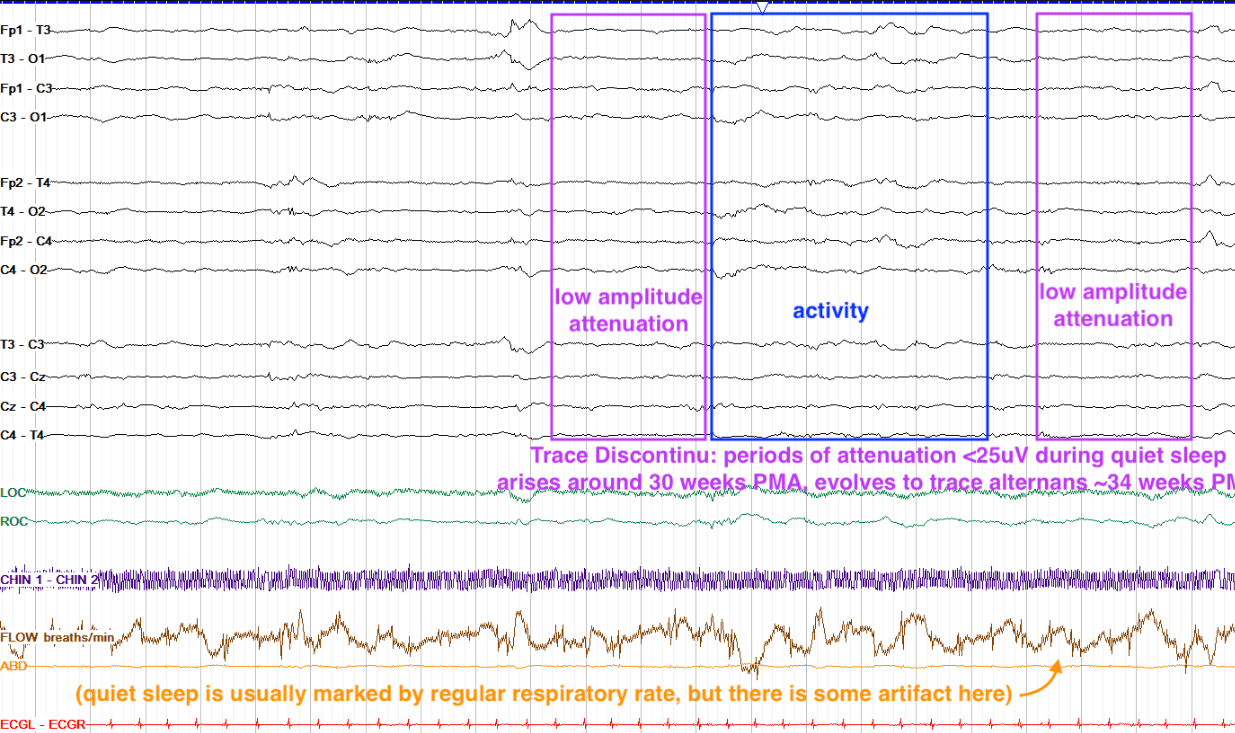Quiet sleep is characterized by the eyes being closed with minimal eye movements and regular respirations. Generally, neonates move from awake into active sleep, then into quiet sleep. Quiet sleep is marked by a pattern known as trace discontinu (attenuated periods <25μV) from 30-34 weeks PMA and by trace alternans (attenuated periods >25μV). Starting at 34 weeks PMA, trace discontinu evolves into trace alternans, in which interburst intervals are higher amplitude — 25μV or more and in turn the IBI continues to shorten. Beginning as early as 34 weeks onward to term, trace alternans evolves to slow wave sleep.
Question:
What is the term used to describe the awake state of a healthy term newborn?
Results
#1. What is the term used to describe the awake state of a healthy term newborn?
A healthy term neonate is awake when the eyes are open, and the EEG background has continuous, low to medium voltage (25– 50 uV) mixed frequency of theta and delta and overriding beta activity. This is traditionally called activité moyenne, roughly meaning “average or medium” EEG background activity. During wakefulness, term infants have irregular respirations, and there are spontaneous movements of the limbs and body.





